Athletics preaches innovation in decision to combine cheer and dance teams
A shocking change to Oakland University Athletics came on April 19, when the department announced the combining of the cheer and dance teams to form one spirit squad.
“What we’re looking for is a highly energetic add to our game presentation,” Athletics Director Jeff Konya said. “Student-athletes that can help us with marketing and promotions and really be a driving force in our game-day atmosphere.”
This change puts the emphasis on the game-day experience, rather than the competitions that have been a large focus for both teams in the past.
“It’s really going to be more about the in-game and performance elements and trying to align what our fans love about the spirit squads, but give them the freedom and innovation to recraft and reimage what those performances are going to look like,” Konya said.
The teams learned of the decision on Wednesday evening, and the idea was not met with strong support from many of the student-athletes. Taylor Seifert, a dance team member who will be a fifth-year senior on next year’s team, described the general reaction as “shocked.”
“It’s a huge shock to pretty much everyone,” Seifert said. “It’s no easy decision, but I think there’s a lot of potential for it to be a good thing. But I think everyone is just in shock almost because it’s a new thing and change is never easy.”
Seifert noted that the biggest concern is not with the combination of the teams, but more with concern that the new team will no longer be competition-focused. The new team will not be able to participate in the National Cheerleaders Association national competition nor in the Universal Dance Association national competition.
“A lot of people are upset because the fact that a lot of people joined the team with the promise of going to nationals,” Seifert explained. “It’s a big part of when you’re a part of a dance or cheer team to have that experience . . . It’s not the one team [that is upsetting the athletes], it’s the no nationals.”
To help cushion the blow of no longer competing at nationals, the administrators told the teams that there is a possibility of a competition element for the spirit squads at next year’s Motor City Madness basketball tournament. This would allow the spirit squad to compete for the Horizon League championship, like every other sport in the athletics department.
If this was made a reality, the combined team could retain some of the competition element that drives these student-athletes. Seifert explained that, though it’s important to practice to do well in their game-day performances, the real driving factor has always been bettering themselves to compete.
“At the meeting, someone made a good point that nationals gives you the motivation to get better,” Seifert said. “You don’t just practice to practice, you practice to get better, so you can win.”
Though some of the dancers and cheerleaders are having a hard time seeing how the two teams will be able to come together as one in their routines, Konya and the athletics department see it as an opportunity for creativity.
“I think it’s innovative,” Konya said. “It lends itself for someone to come in and really be extremely creative with how they want to conceptualize what this could be from a team and performance experience.”
Another rationale Athletics pointed for the decision is monetary advantage.
“There’s been a lot of obligation of these student-athletes to fundraise for themselves,” Konya explained. “This way, by combining resources, we’re hoping that that burden is lessened.”
Though Seifert admitted competing in nationals and participating on the team is certainly expensive, the financial aspect is not a main concern of the student-athletes.
“[Nationals is] not a cheap trip at all, and a lot of that was either out of pocket or through fundraising,” Seifert said. “But we knew that going in, and we signed up for it . . . [the cost change] is definitely helpful, but not something we were concerned about.”
The athletics department sees a lot of benefit to combing the two teams’ budgets.
“This is a way for us to combine resources,” Konya said. “And in combining the resources of the two teams, I think we can enhance the overall student-athlete experience for those that choose to participate.”
Because of the initial shock of the news, it’s difficult to know how many of the dancers and cheerleaders will choose to return to next year’s combined team. Associate Athletic Director for Public Relations Scott MacDonald suggested the possibility that some of the team members could decide to create a student organization and compete in nationals that way.
The coaches of the new team are yet to be determined.
“It’s hard right now because it’s so fresh, and it’s hard to grasp this concept for a lot of us,” Seifert said. “It was not expected at all, and a lot of people right now are not interested in the idea . . . It’s not an ideal situation they want to be in.”



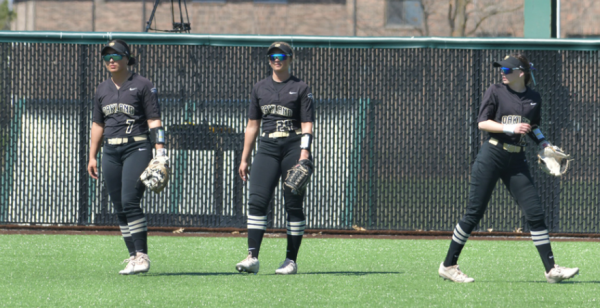

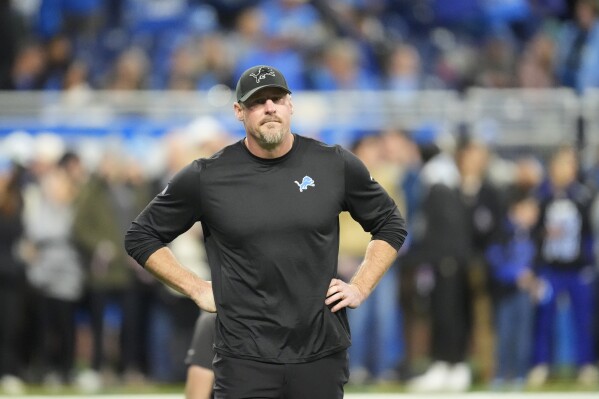

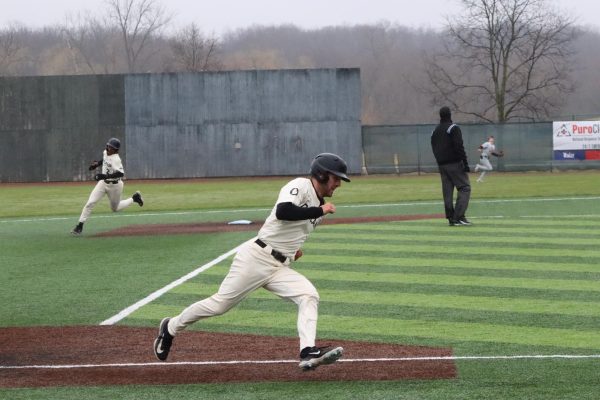
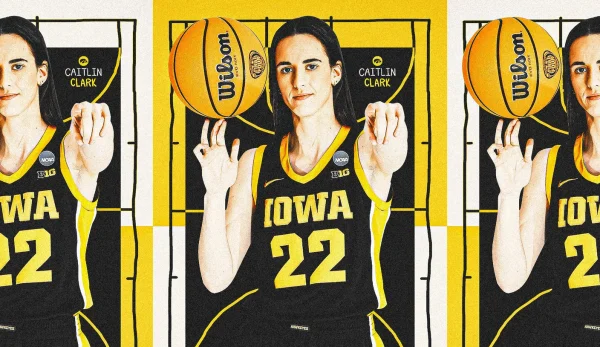
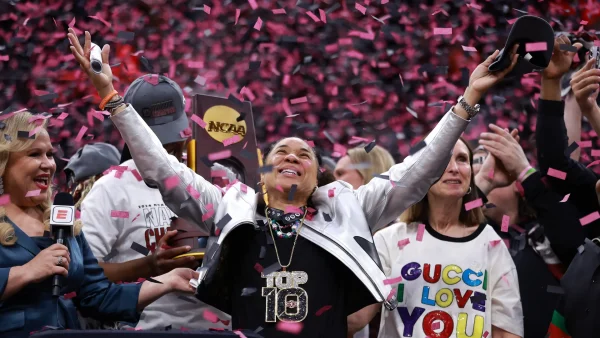
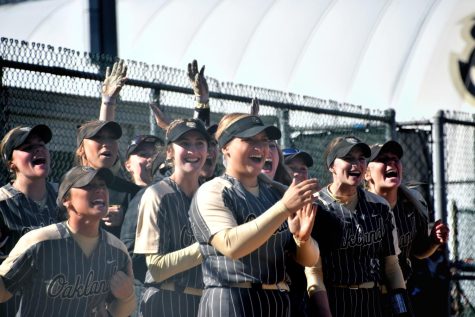
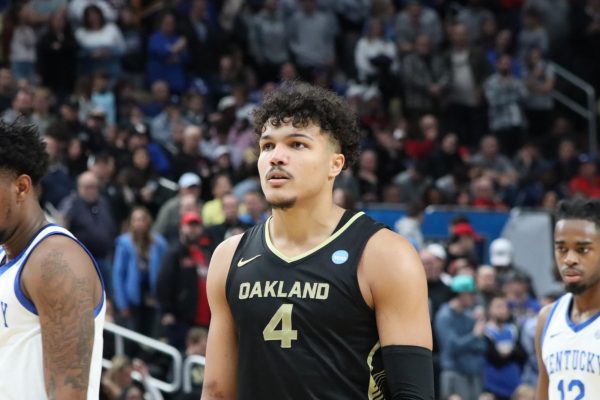
Jenn • May 17, 2017 at 6:57 PM
I just found this article while my daughter and I were researching colleges that offer her intended degree and a dance team. It has nothing to do with competing, and all about continuing DANCE while being involved in the school spirit aspect. No disrespect to the cheerleaders, but she doesn’t want to cheer, or do stunts, or yell things while dancing. She’s spent 14 years training as a dancer. It’s’ disappointing to now rule out OU, and they’re missing out on a great student.
Danish Grizzly • Apr 25, 2017 at 2:15 PM
I’m a season ticket holder for basketball and have been for quite a long time now. As I read through these comments, I can’t help to notice a sense of strong bias towards the cheer and dance worlds. I’m glad there is passion by these teams but as someone that regularly attends events in the O’rena, that wasn’t carried over into their performances from my vantage point. The performances by these teams were bland and mediocre to say the least. It was almost embarrassing at times and as an OU alum it made me almost turn away from watching. Nobody cares about a 60-90 second halftime show, or some other routine, and that doesn’t leave a lasting impression in my book. Makes me wonder how many people outside of that group really cares all that much about this issue. Lots of jaded boys and girls based on these comments. I don’t see anything, anywhere other than in this comment section that says anybody or any team was “cut”? Interpret things as you wish I suppose but you can’t use the argument of combining basketball and baseball. Correct me if I am wrong but does Oakland University consider the varsity dance and cheer teams an actual sport? Do most other schools? Are the members on these teams upheld to the same standards as other OU student athletes? I don’t think so, yet from what I’ve been told, they are still given funding regardless! So many misinformed people here! The bottom line is this. In the context of Oakland University, much like other universities – (even powerhouse schools), Dance and Cheer squads aren’t funded nor treated like a regular varsity sport so in this case I think Oakland should be able to do whatever the heck they want. If people don’t like it, they can find another school or another program to get involved in. It’s refreshing to see an organization like Oakland Athletics thinking differently and trying something new! Not just the same old boring stuff you see every year in the O’rena. As someone who has been going to games for over 10 years, the gameday experience is so much better than it used to be and it’s NOT because of mediocre Cheer and Dance squads who care more about their outfits, hair and makeup than interacting with the fans!
Lori • Apr 21, 2017 at 2:35 PM
Unbelievable! This is so sad:-( I was pushing my daughter towards OU so she could pursue her academic degree as well as try out for the dance team since we have been following friends of hers on the team for years…Looks like we’ll be looking elsewhere:-(
Jessica LoDuca • Apr 21, 2017 at 1:58 PM
Unfortunately, OU made a huge mistake and attempted to cover up their decision as “freedom and innovation” to align more with the fans. If you want the teams to do more for the fans, then give them a larger opportunity during those events. And as far as freedom and innovation go, putting two different sports into one program shoves them in a box that risks stifling creativity.
For a university that makes as much money as OU does off of numerous dance team camps they house, you would think they would understand the dance and cheer world a bit more- but apparently not.
If these athletes are willing to put in the time and money, many of whom knew what this entailed because they competed during high school, this isn’t something that bothers them. Most Michigan dance and cheer teams compete locally and Nationally. These students know exactly what they are getting into when they join a competitive collegiate team and are more than willing to put in the work.
Dancers and cheerleaders are some of the hardest working, dedicated athletes and are rarely recognized for their effort. They prepare for competition while supporting other sports and their university. To ignore this fact and what both teams stand for is unfortunate and wrong.
OU made a mistake not only by cutting the programs but without consulting each team and the athletes to figure out what makes their teams unique. Cheer and dance are being combined because they are both spirit squads. Its like combining a soccer team with a lacrosse team because both are played outside. It makes no sense.
Hopefully OU recognizes these issues and reconsiders their decision.
Courtney • Apr 21, 2017 at 1:17 PM
As a member of a collegiate dance team for three years at another university I am appalled and disheartened for the girls (a few of whom I know and have danced with in the past) of these two teams. Dance and Cheer are 100% two completely different sports. There is a reason that at all major universities they are two different teams. Cheer and dance training is different fundamentally from the beginning. The idea of combining these two sports is extremely degrading to these extremely talented young women.
As a member of a college dance team I can confidently say that these young women and men work so hard to create a positive game day atmosphere for the fans and represent the university in a positive light. To say that they did not enhance the game day experience and that this new “energy squad” will better enhance fan’s experience is extremely offensive. Those members have a deep and profound love for their school and all that it represents.
Lastly, the men and women involved in these two programs are athletes. They train extremely hard to compete at the highest level to represent OU. To not recognize the HUNDREDS of hours they put in to positively represent OU athletics is disrespectful. Competing is an integral part of collegiate cheer and dance and also helps draw talented students to the school. Young dancers and cheerleaders look up to these student athletes and they serve positive role models for many young girls. Why would you not want to continue supporting programs that promote a healthy lifestyle, community involvement, education, sportsmanship, and personal growth. I know I gained so much from my college dance team career that I will hold so dear and I’m so glad I did not attend OU because I know I would not be where I am today without the support of my coach and teammates.
Congrats OU athletics on making an insanely stupid decision.
Aimee Symington • Apr 21, 2017 at 11:52 AM
This decision devalues both of these teams and specifically seems to target female sports. It also seems patronizing to continually refer to them as student athletes when you’ve dissolved their sport and downgraded it to an entertainment spectacle. This is a shame and would never have happened if these were male dominated sports.
Kelly • Apr 21, 2017 at 9:59 AM
This is a sad decision that will have devastating results for Oakland University enrollment. The news has already caused many students to reconsider their decision in attending this college. The idea of this being a way to enhance the games with more OU spirit backed entertainment will backfire since the current mood is any but positive. Maybe the administration should use the Marketing students to promote the school instead of pimping out the girls for their own fundraising agenda.
Lynn • Apr 20, 2017 at 10:20 PM
I don’t understand how they use funding to justify this ridiculous idea!! These teams were not supported financially! It has been very clear that the athletics department has not been supportive of these teams in any way whatsoever! And despite all of this, these girls were proud to be a part of these teams and represent a university they love. This is devastating to these girls! And what a slap in the face to the coaches! I know the sacrifices that have been made and the dedication and hard work the coaches have put into these teams. Such a poor decision!
Steven • Apr 20, 2017 at 8:52 PM
As a donor to the dance team this past season, I feel pretty under appreciated. I can’t express enough how this decision brings me to yet another crossroads in support of Oakland University.
Time and time again, I see wasting of resources and poor decision making, especially in OU Athletics. Extravagant dinners, expensive gifts at golf events and trips around the country, all in the name of ‘courting’ folks so they will give…. well you got me, and yes I fell for it!
Be careful making decisions like this as you begin to ask folks to support the new capital campaign. These kids who dance and cheer have many options of universities to attend. At a time when retention rates are critical, I would suggest this may not be a great choice. especially when those young people had so much pride for OU and their families were prospects of giving. I believe these kids and their families may now leave OU with a different perspective.
Angela • Apr 20, 2017 at 6:23 PM
As a former OU dance team alum, I feel this is a bad decision. Both teams require different technique and training. This now limits the number of people who can join and find something that fits for them. I would have never known the people I did or enjoy my on-campus college experience if it wasn’t for the OU dance team. Cheer leading isn’t for me. They need to be separate!
Jannessa • Apr 20, 2017 at 5:34 PM
Oakland University should be ashamed of themselves. What a horribly sexist and stupid decision for them to make. LETS JUST COMBINE BASKETBALL AND BASEBALL WHILE WE’RE AT IT! This sounds like a clear violation of the title IX rule and if these were male sports teams, it wouldn’t even be a discussion. I feel incredibly heartbroken for the many female ATHLETES who are being forced into a role where their main purpose is promotions/marketing/to look pretty instead of showcasing their skills and talents they’ve learned and perfected over YEARS. Thanks a bunch, OU, for setting these sports back decades when you have it in your power to give them the respect they deserve.
Ashley • Apr 20, 2017 at 5:19 PM
As a former member and captain of a college dance team as well as a relative and friend to members of Oakland’s dance team, I am so incredibly disappointed in the university’s decision to cut both programs. It is without a doubt possible to fulfill university obligations by attending games, completing community service, and being a huge PR outlet for the school all while preparing to REPRESENT THE UNIVERSITY (yet again) at the national level. It blows my mind that the university would not want themselves represented in as many avenues as possible. Both teams devote countless hours to supporting the school and all of its varsity sports. Dance and cheer typically are not varsity sports at the college level and every single member of both teams is willing to go above and beyond for the school and even fundraise themselves to be able to compete nationally and continue to represent. Your decision to combine the two teams (which are SO COMPLETELY different, this isn’t even possible) is a huge loss for OU.
This is incredibly disappointing and just goes to show how undervalued and unappreciated dance and cheer are at certain universities. You would certainly never cut men’s basketball would you? I hope the members of both teams stand by their frustration, teammates, and sports and choose to forgo representing the university in this absolutely crazy, unrealistic way.
laura boyles • Apr 20, 2017 at 5:12 PM
If the athletic department is going to make decisions for cheerleading and dance perhaps I like to combine other teams as well. Perhaps basketball and football they both chase a ball bypassing and scoring.hy is it just cheerleading and dance they should be deciding this across the board with all sports and not just isolate the female teams
Matt Mowery • Apr 20, 2017 at 4:57 PM
If anyone would like to comment on the record (full name, hometown, etc.) for a similar story in The Oakland Press, please drop me an email at [email protected].
Let me know your feelings (especially if you’re a current team member).
Lisa Chow • Apr 20, 2017 at 4:20 PM
I am shocked at the decision. My daughter cheers at another school and she would be, along with her entire team, devastated. They cheer and put their hearts into the games they cheer for and love it as well as the competitive aspect. You can’t compare the two. I am sure it is the same at OU. Obviously I wasn’t in the meetings but cheer and dance doesn’t get the respect it deserves. Theses students are amazing and dedicated athletes and the team was probably one of the reasons why they made their final decision to choose that school. This to me seems as if the administration doesn’t understand or respect how amazing those athletes are and that they deserve to continue to hone their skills as separate teams and compete as well as perform for the games.
Hannah • Apr 20, 2017 at 3:49 PM
I think this is a great idea, cheer and dance teams are a waste of tuition money, good job OU!!
Rose • Apr 20, 2017 at 7:46 PM
Lol, but the best part is they are not a waste of tuition money because they aren’t funded by the athletic department. The teams pay for almost every single thing themselves and through fundraising. They were never supported financially.
Anonymous • Apr 21, 2017 at 11:45 AM
It’s ignorant people like you who are costing these girls their one passion to continue on and love for supporting their school. Shame on you for your crappy comment, and shame on you for not educating yourself before you ran your damn mouth.
Jennie • Apr 21, 2017 at 5:28 PM
Obviously you have no idea where your tuition money is going because these teams raised every penny for themselves. Educate yourself before posting such an ignorant comment.
J • Apr 20, 2017 at 3:45 PM
A not-very-classy move by the AD to announce this decision the week of finals. Why not wait until next week?
Liz • Apr 20, 2017 at 3:32 PM
As an OU alum, I personally have never really cared for any sport that is on campus, because I focused primarily on academics and academic-based clubs.
I say this because I too, don’t see the logic behind this decision at all. Obviously, the two sports are different. How can you combine them and say they’re a ‘spirit’ team? What you’re going to get are two groups working bitterly together because all they want to do is their sport.
If you’re cutting this sport because of funding, then you should cut golf/volleyball/tennis/etc. because let’s be honest – they’re not bringing in money, either. The only TRUE athletic money maker is the men’s basketball team, so by this theory we should be cutting all other sports so more can go in the Directors’ pockets.
Julie • Apr 20, 2017 at 2:55 PM
This is an insult to the hard work and dedication the athletes on the OU cheer and dance teams have shown in the past. Cheer and dance are competitive sports and the programs at OU have been advancing and improving over the years. This decision shows that the administration does not care these teams have been nationally ranked and that these athletes are very competitive talented in their sports. To take a competitive sport and turn it into a “marketing opportunity” is a very low blow. These talented student athletes will now go somewhere that actually values the work they put in, and that is a loss to OU.
John • Apr 20, 2017 at 2:44 PM
Good grief…it’s bad enough you don’t even see these squads off with a varsity letter and now you would like to add injury to insult by cutting it out altogether by combining 2 different disciplines students worked so hard for all their lives? Why don’t you combine the basketball and swim teams too. Hilarious! See how that works. Students go to Oakland for an education and somehow there is always someone at a high level with a hair brain idea. Time for a new AD. The school will be contacted.
Erynn Pauli • Apr 20, 2017 at 2:03 PM
Bad move OU – you have lost my support as an alumi by cutting the cheer program that my senior athletes dreamt of being a part of. You are surrounded by the best high school cheer teams in the state and you didn’t have the foresight to realize that those athletes may be looking to continue their education and athletic career at your university. Somehow you have the funds to build building after building, but not to support student athletes. Seems like there are some messed up priorities there or you just have a complete disregard for your athletes and their sport. I choose not to be a part of it financially or in any other way. Don’t call me asking for funds for a new mascot – your athletic department isn’t worth it.
Geri Elise Conner • Apr 20, 2017 at 1:51 PM
For the sake of these athletes, I hope they find a way to form their own organization and compete. I have taught several of the dancers on Oakland’s Dance Team and they are tremendously talented. Many young girls really look up to them and have talked about going to Oakland with the hopes of auditioning and competing with this team, especially on the National level. This is extremely unfortunate.
Chris • Apr 20, 2017 at 1:35 PM
I’ve read the article and every comment posted here and don’t see anyone who seems to think this makes sense and I don’t think it makes sense either. I attend every home basketball game and I can’t begin to envision how a dance team combined with a cheer team can possibly become one. Two totally different skills. It’s unfortunate how OU never seems to consider the students and what they might want but instead it’s all about the money. I would hope they consider all the comments and turn this decision around since it’s not too late to do that.
Taylor • Apr 20, 2017 at 11:46 AM
This is a very poor decision. Each team is special in their own way. You cannot just lump the two together to save a quick buck. They each individually train just as hard as any other university sports team and should start to be treated like it.
Emily • Apr 20, 2017 at 10:18 AM
This is a terrible idea. As a Oakland University student, those are two teams that are very involved and I don’t feel there is a competition between them. Being part of the dance team or cheer team has their own separate roles on campus. I don’t believe their is going to be much involvement in the spirit squad as there was in the cheer and dance teams.
Emily • Apr 20, 2017 at 10:09 AM
As a former college dance team member, the shift to using our sport merely as a marketing tactic for universities is disrespectful to not only the sport itself but to the members who have put in so much time and effort over their college careers to have the chance to compete nationally for their university. There is a capability for these programs to focus on both game day performances as well as national competitions as proven by so many other college dance and cheer programs. Why take away a performance outlet for girls and guys that have worked so hard to achieve at a collegiate level when they have given time and effort to university obligations? Part of being on a team is wanting a level of competition and wanting to compete for a team orientated gaol such as placing high at a nationals competition and making these teams an energy squad at games takes away the creativity and competitive element. A compensation of competing against other spirit squads at a basketball tournament is not comparable to a nationals competition and will not be sufficient to those who have worked so hard to get to the college level in their sport.
Alexandra worde • Apr 20, 2017 at 9:50 AM
This is an absolute ridiculous idea. These teams should be kept separate as both bring energy to the fans and school. Also, both teams compete nationally, which is a HUGE deal for the girls. They work hard Year in and year out and dedicate themselves to be the best and show that off during competition season. The squads are not only to bring energy to the fans and represent the school, but this is something for them as well. All of these girls have competed with previous studios and other teams prior to college. As you don’t know, these girls can no longer compete with them because of age. College athletics is the next step for them to continue on with their passion that they have worked so hard on over years of practice. You should really reconsider this decision. These teams have brought a great name to your athletic department and have done A LOT for your school. I think they more than deserve to keep their teams, and separated at that! And this is a cheap way for you to save money. I’m sure you can come up with something else.
Caitlin • Apr 20, 2017 at 9:42 AM
This is absurd. Cheer and Dance are completely different. Would you cut the baseball team and football team and try to combine sports?
How does this make any sense? Not to mention you are lowering the chance of girls to be able to participate. Dancing requires rhythm and specific training. Cheer requires gymnastics and is 100% different.
Come on Oakland, you are a D1 school. you can handle two squads. Lets get it together.
Tammy Francuch • Apr 20, 2017 at 9:26 AM
This is unbelievable.. These girls do not want this, they want to compete. This director should be fired, not the coaches. Once again management making decisions without talking to the students who represent the school.
Maddison • Apr 20, 2017 at 9:04 AM
You cannot be telling me these teams are upset (mostly) soley based on because of the competition aspect of it. They’ve competed in nationals once(dance) and twice (cheer) in the past however many years. I think what’s causing the upset and the shock is the fact that these teams have spent so many years building each of their teams to what they are now. The sad truth is that athletics has never “cared” about these women (and men). I mean they CLEARY state this decision was made based on marketing. I can tell you right now this is not a good decision on their part. What university has an “energy squad”? This is going to make us look ridiculous. But the decision has obviously been made. Congrats to the athletic department on another ignorant move made on these teams.
ray partlo • Apr 20, 2017 at 8:11 AM
I don’t know what the athelic director was watching at all the games, but as a spectator you could not have a more energetic groups then the cheer team & dance team were so energetic in their performances. My wife & I have went to about 90 percent of both the women’s & Men’s basketball games. This is an insult to the many dedicated young women & men who sacrificed so much time to their teams. We will have to think twice about attending any of these games next year. YOU ARE DEAD WRONG TO DO THIS TO THEM !!!
Laurie Nemitz • Apr 20, 2017 at 8:10 AM
As an OU alum, I am extremely disappointed in the decision to combine the dance team and cheer team. I am also a trained dancer and former dance teacher and can tell you first hand that dance and cheer are two different athletic disciplines. Cheerleaders and dancers have their own teams starting early on in elementary school, so why would it be fair to “all of a sudden” combine disciplines at a collegiate level? High schools and all major universities have separate teams, so why is this a good decision? If OU wants to be accepted as a competitive athletic university they need to keep these two separate. They will lose a lot of great student candidates who want to continue dancing and cheering into college to other universities that they can do so at. This article sounds like a total coverup for a money saving move by OU. How unfortunate.
Renee Biber • Apr 20, 2017 at 7:37 AM
These dancers chose to extend their studio training for the four years of college. For most of these athletes those four years will be it. After that they will be hanging up their shoes and pursuing adulthood in full force. This decision is taking that away from them. I feel the decision makers must never have been involved in something they feel SO passionate about like a dancer feels about their art. What a shame to strip them of their passion.
A willming • Apr 20, 2017 at 6:41 AM
This is a trebile idea in your reasons make no sense. You are a College not a pro sports team!
Some of the dancers commute to Oakland this was a way for them to be part of a college.
Part of going to a college games are the cheerleaders and the dance team The dance team performed at other sporting events besides basketball they performed and volleyball games and Soccer games and as well did community service.
As far as combining resources the dance team raised their money to buy their uniforms their costumes and make the trip to nationals this was a choice they made by joining the dance team or cheer teams.
The budget these athletes received is nothing compared to what Oakland pays out to other sports. Combining them for this new team really doesn’t change the fact these girls but still have to fund raise for anything they wanted to do or need.
Yes most of the girls are in shock over your decision to cut their program with out any warning as are the parents.
What an injustice to the athletes and the coaches!!!! You really need to reverse this decision
Dawn • Apr 20, 2017 at 1:44 AM
The biggest concern is combining the teams. Cheer teams and dance teams don’t even do the same things. What about the stunting, pyramids, and tumbling? Also, for the administration to act like they are doing the teams a favor by lessening the load for fundraising is ridiculous, that’s up to the teams. Also, all the other teams in the Horizon league have cheer teams separate from dance teams.